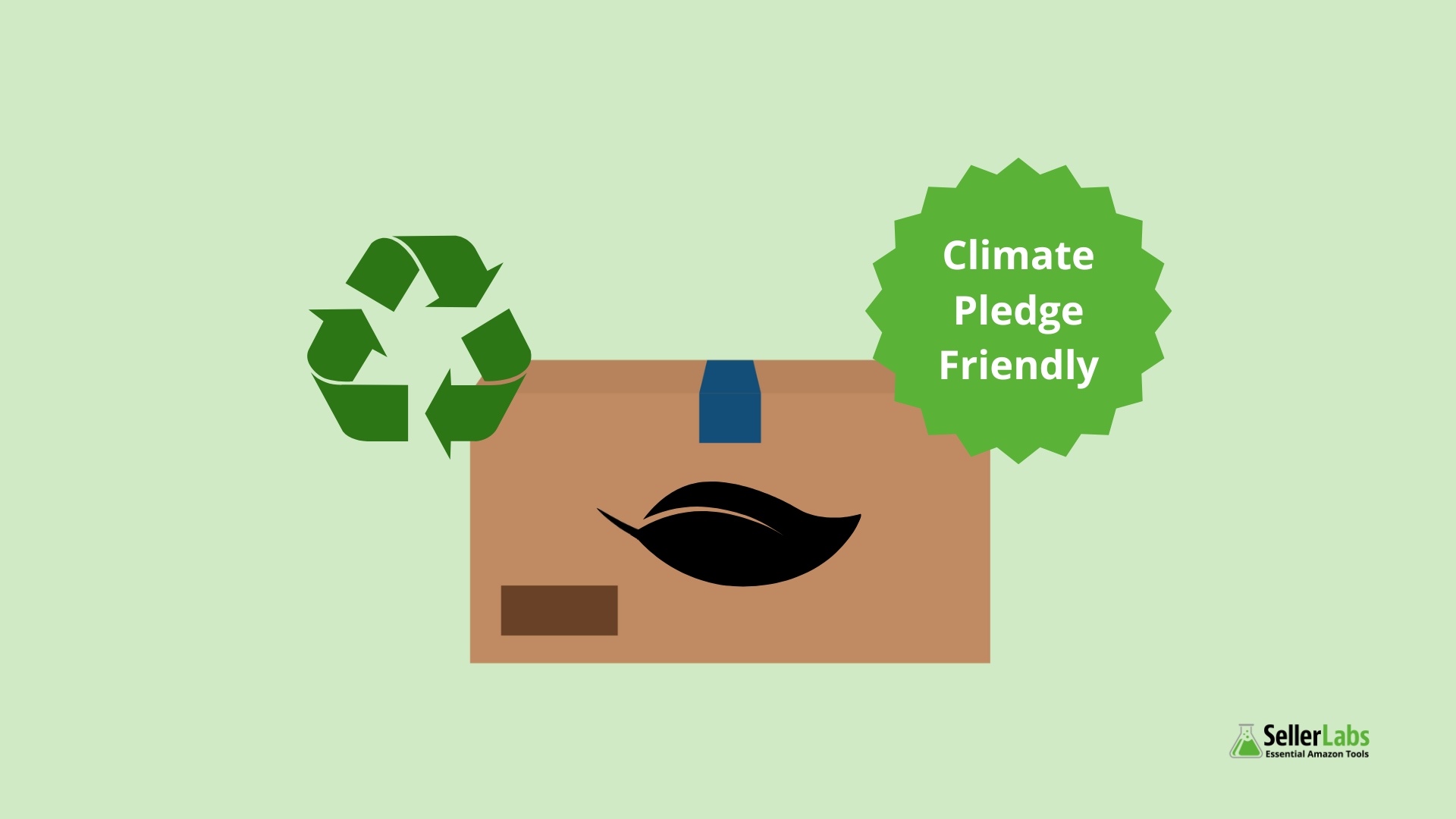Why Sustainability Now Matters More Than Ever on Amazon
Amazon’s Climate Pledge has gone from an abstract corporate goal to a direct requirement for sellers. As of 2025, Amazon is rolling out stricter guidelines on packaging, carbon emissions reporting, and eligibility for “Climate Pledge Friendly” (CPF) badges.
For sellers, this shift is no longer optional. It impacts your:
- Listing visibility and trustworthiness
- Packaging compliance
- Eligibility for certain programs
- Shipping fees and fulfillment priority
In this guide, we’ll break down what’s changed, how it affects your business, and how to stay compliant—without killing your margins.
What Changed in 2025: Amazon’s Climate Pledge Updates at a Glance
Here’s what Amazon updated as part of its sustainability initiative:
1. Expanded Climate Pledge Friendly Badge Criteria
Amazon is now including more certified third-party sustainability programs (including biodegradable packaging, energy-efficient manufacturing, and carbon offsets). If your product meets the updated standards, you may be eligible for a CPF badge—which can boost click-through and trust.
2. Packaging Requirements Tied to FBA Preferences
- Amazon is rewarding eco-optimized packaging with lower fulfillment fees and faster prep times.
- Products with non-recyclable or bulky packaging may now be deprioritized or face higher storage and prep fees.
3. Backend Attributes Matter More
New fields related to materials, recyclability, and country of origin now play a role in listing quality and discoverability.
4. Enhanced Customer Filters
Shoppers can now filter search results by “Climate Pledge Friendly” and “Sustainable Materials.”
If you’re not part of this category, you’re invisible to those users.
Why It Matters: Real Impact on Sellers
🔎 CPF = Higher Visibility
Products with the badge are prioritized in search results, especially in environmentally conscious categories (home, beauty, baby, etc.).
💰 Packaging = Cost Savings or Hidden Fees
Failing to use Amazon-preferred packaging could lead to:
- Extra FBA prep fees
- Slower inbound processing
- Reduced Buy Box visibility
🚫 Non-Compliance = Listing Risk
Some categories (especially supplements, personal care, and grocery) now require detailed sustainability info to stay compliant.
How to Stay Compliant & Competitive
1. Audit Your Current Packaging
Start with your FBA SKUs. Check:
- Is your packaging recyclable?
- Can you reduce excess air or filler?
- Can you ship in manufacturer’s packaging?
Pro Tip: Use Amazon’s SIPP program to see if your packaging qualifies.
💡 Not sure where to start? Read our detailed breakdown of Amazon’s SIPP program to learn how it replaces Frustration-Free Packaging—and how to stay compliant while cutting costs:
👉 SIPP Replaces Frustration-Free Packaging: How to Stay Compliant & Cut Costs
2. Update Your Backend Listing Data
Head to Manage Inventory → Edit → More Details, and ensure:
- “Material Composition” fields are filled out.
- “Packaging Type” is selected accurately.
- “Certifications” (FSC, Energy Star, etc.) are added where applicable.
3. Apply for Climate Pledge Friendly Certification
You can qualify through:
- Amazon’s Compact by Design
- Third-party programs like EWG Verified, CarbonFree Certified, or OEKO-TEX
📌 Explore the full list of Amazon-approved sustainability certifications that can qualify your products for the Climate Pledge Friendly badge—and boost your listing visibility: View the certification list on Amazon
4. Use Inserts to Promote Sustainability
Let buyers know you’re making eco-conscious choices:
- Include a note about recyclable packaging.
- Use QR codes to share your sustainability story.
This can boost brand loyalty and repeat orders.
Track SKU-Level Profitability with Seller Labs
Packaging changes can affect your margins in unexpected ways. Use SKU Economics to track:
- Cost per unit, including packaging (if entered in your COGS)
- Amazon fees and revenue data that help identify margin changes over time
- SKU-level profitability trends, especially before and after packaging updates
Pair this with Restock to avoid overstocking high-fee SKUs with outdated packaging.
Sustainability Is a Sales Strategy
Amazon’s 2025 Climate Pledge updates aren’t just about compliance—they’re a competitive advantage if you embrace them early. By optimizing packaging, updating your listings, and seeking CPF certification, you can unlock:
- Better search visibility
- Lower fees
- Higher buyer trust
- Future-proofed compliance
Ready to scale smarter?
Use Seller Labs to monitor costs, protect margins, and sell smarter. No Credit Card Required!
